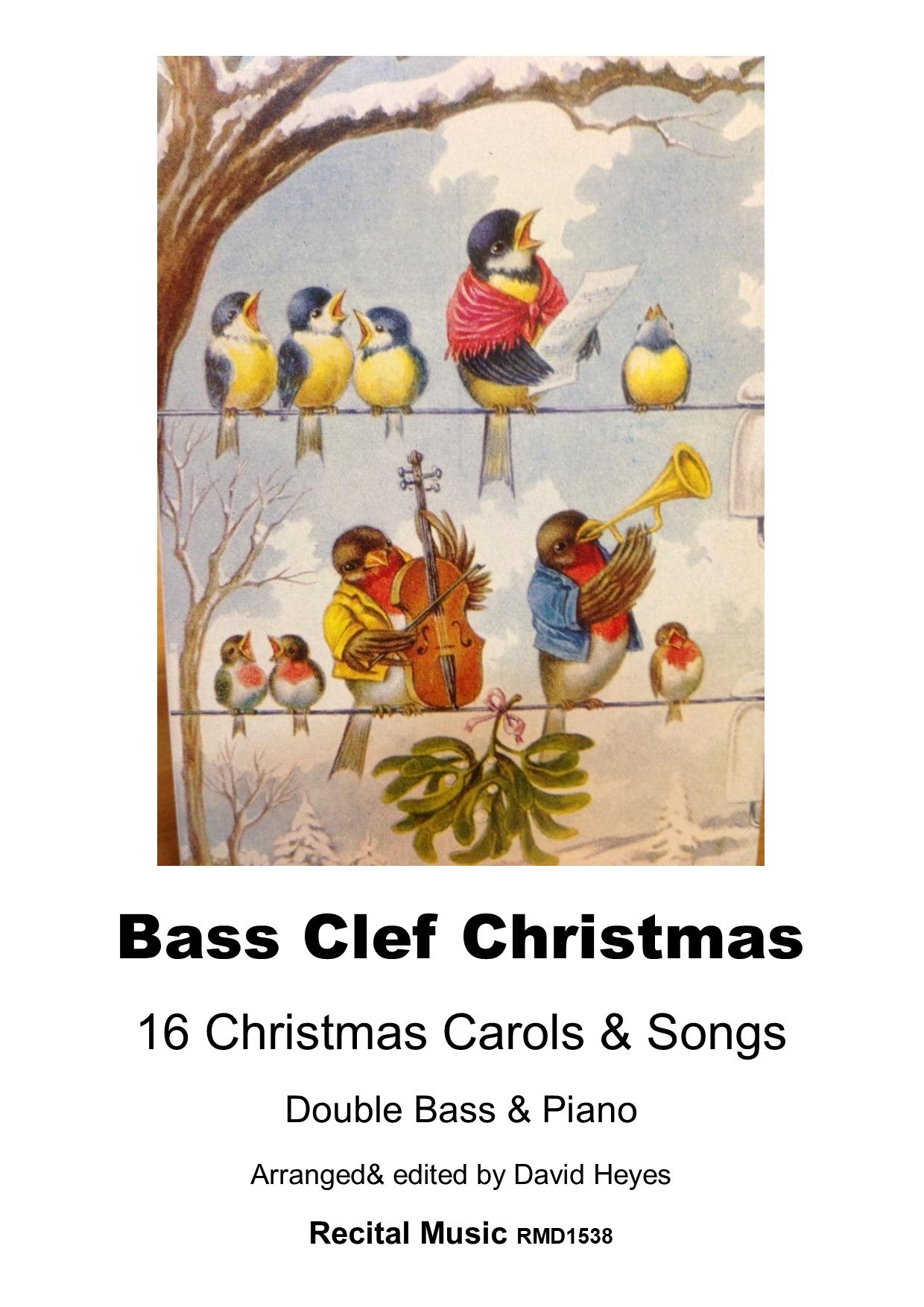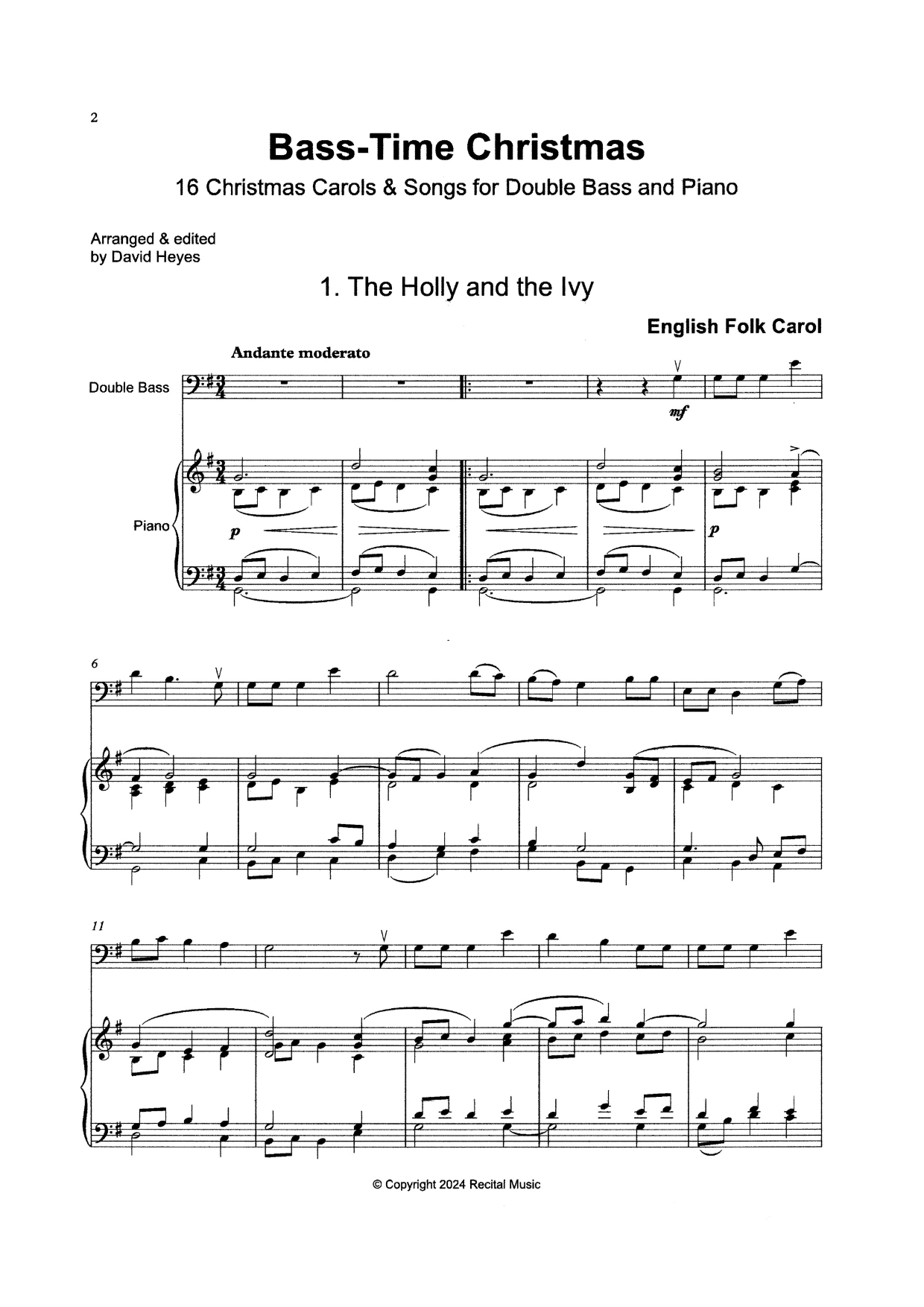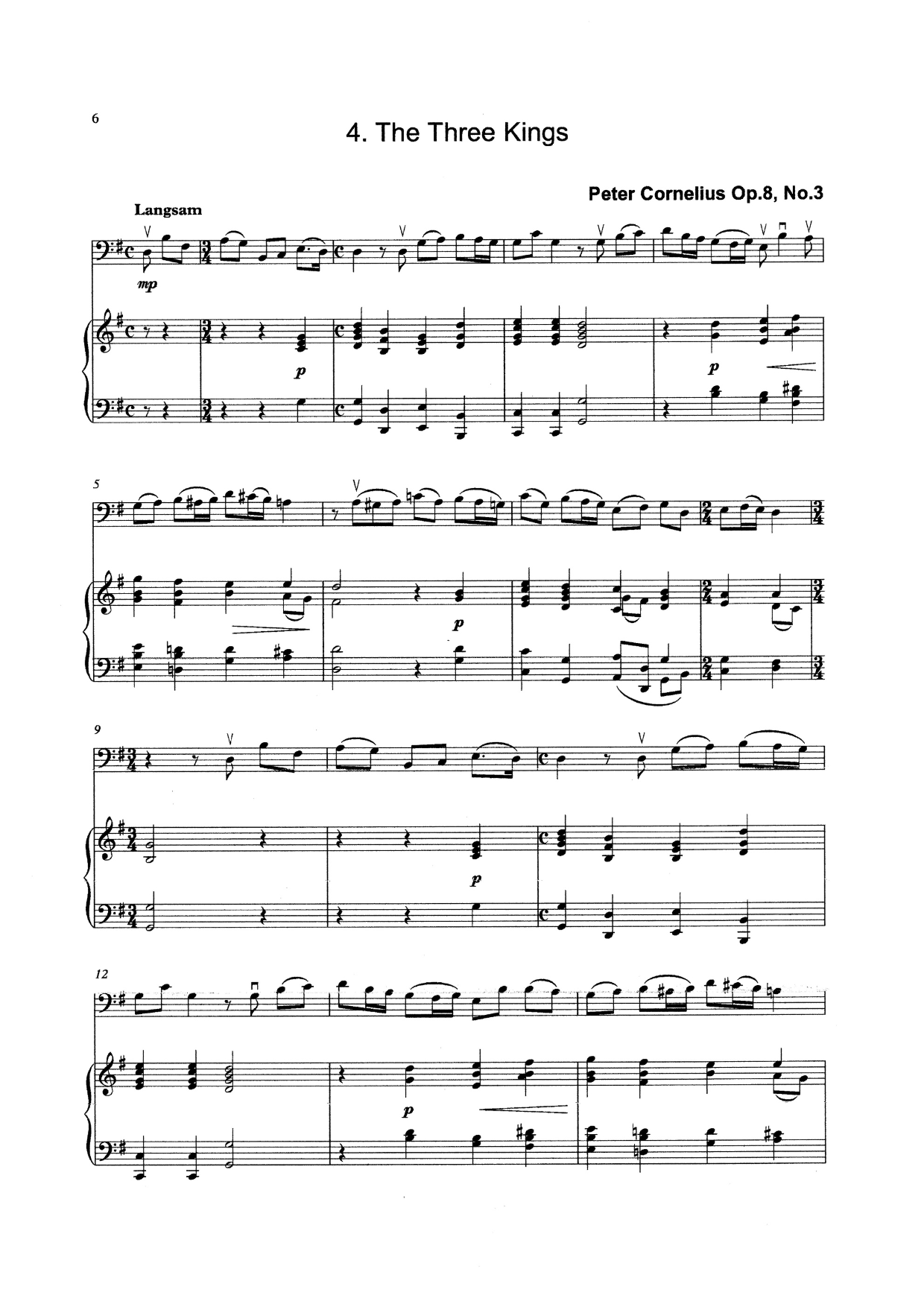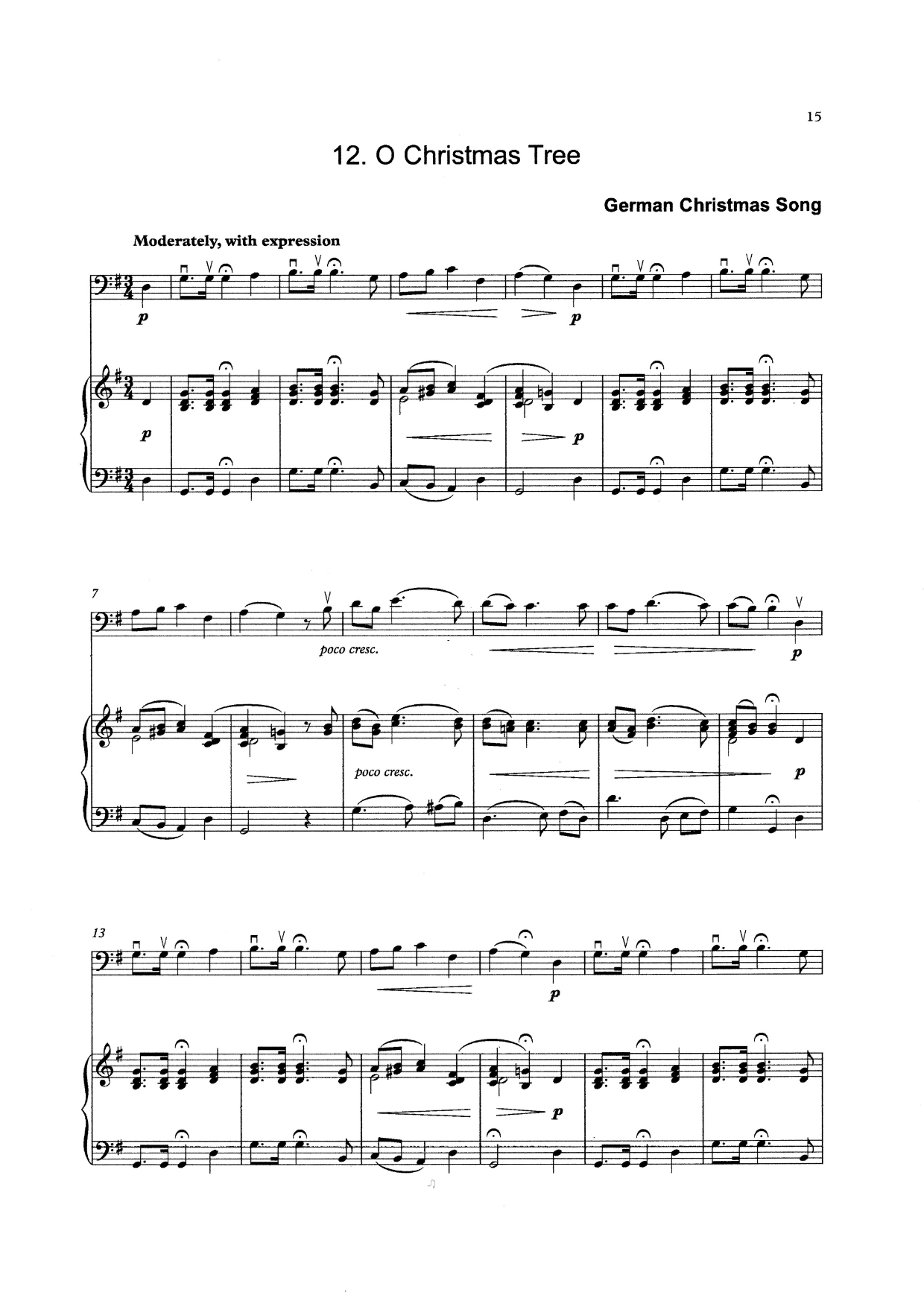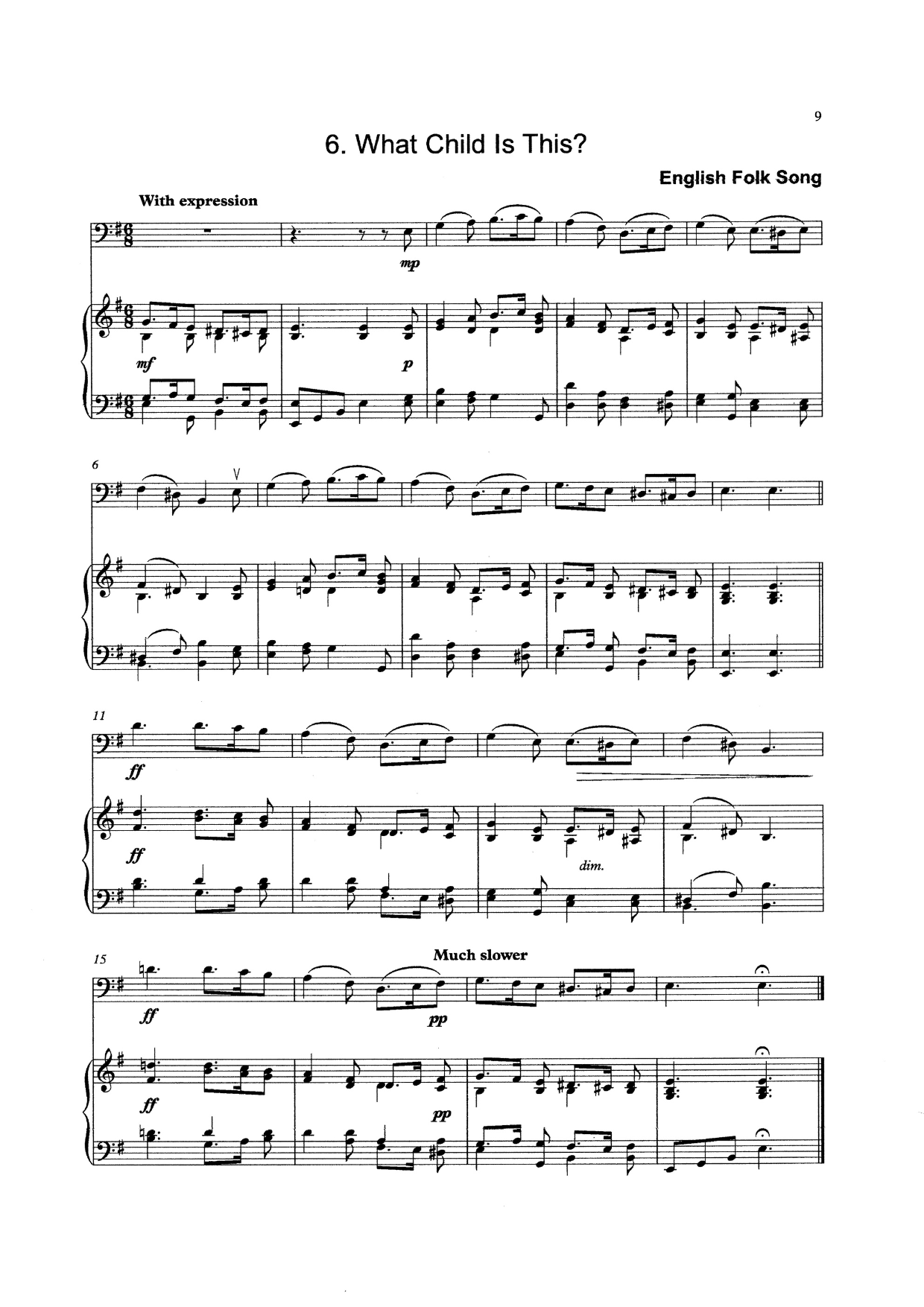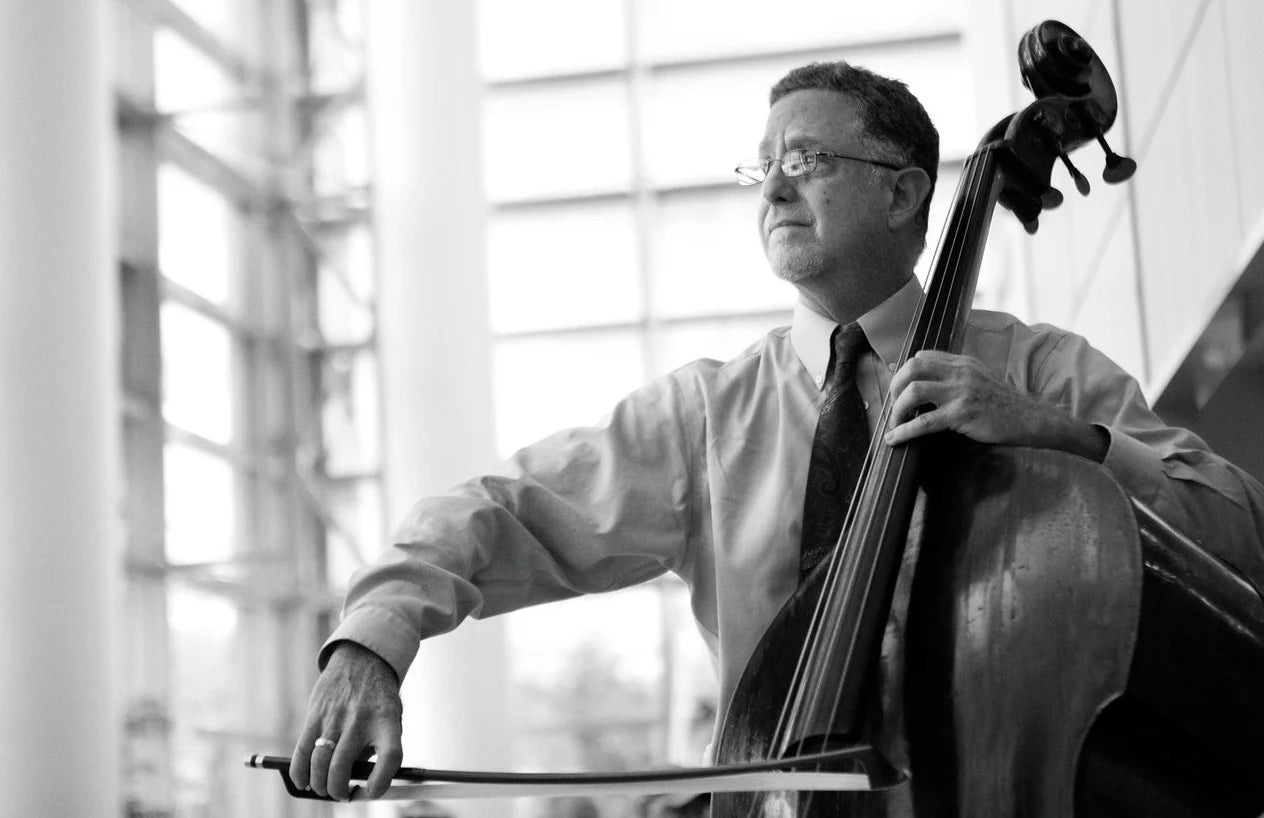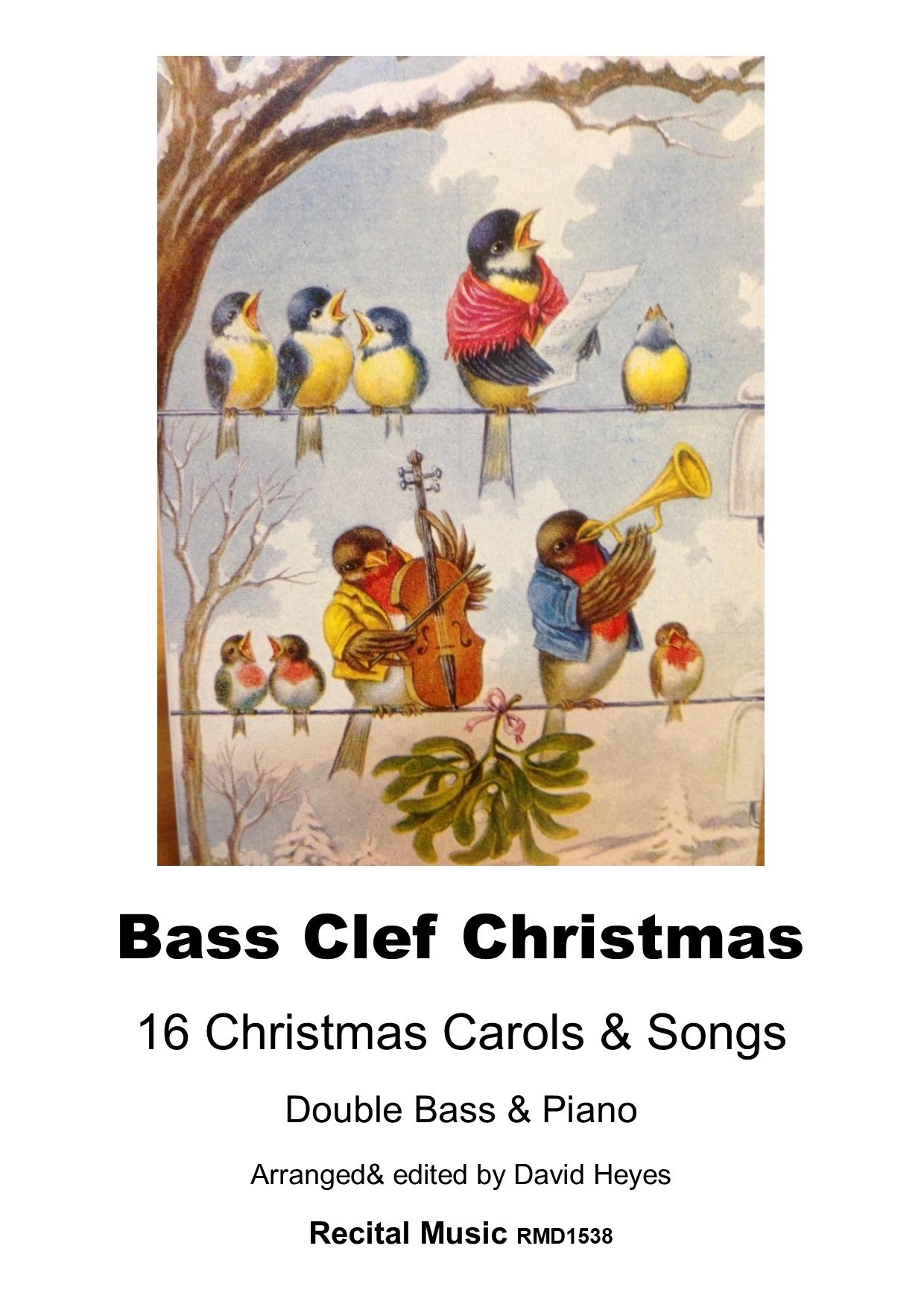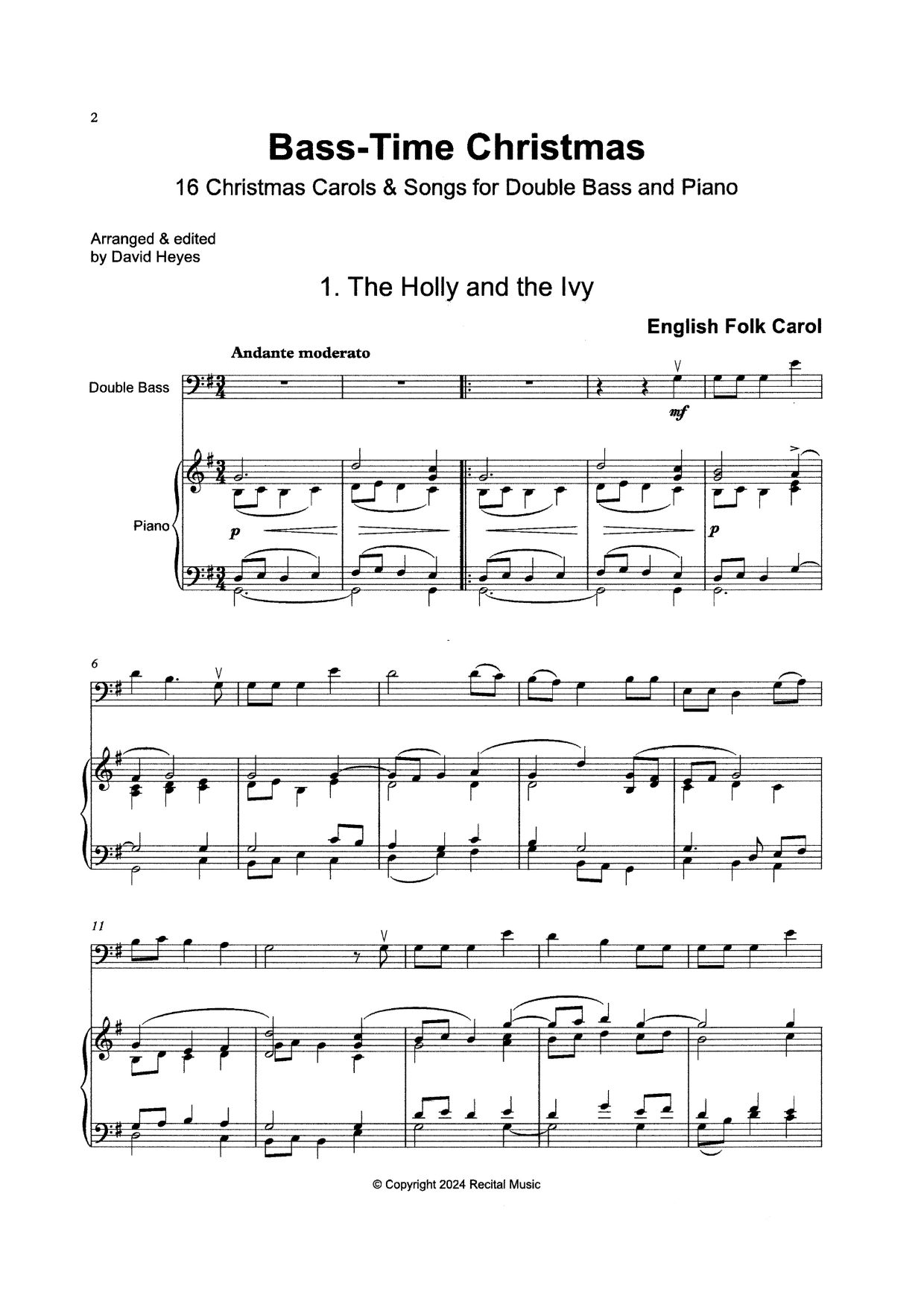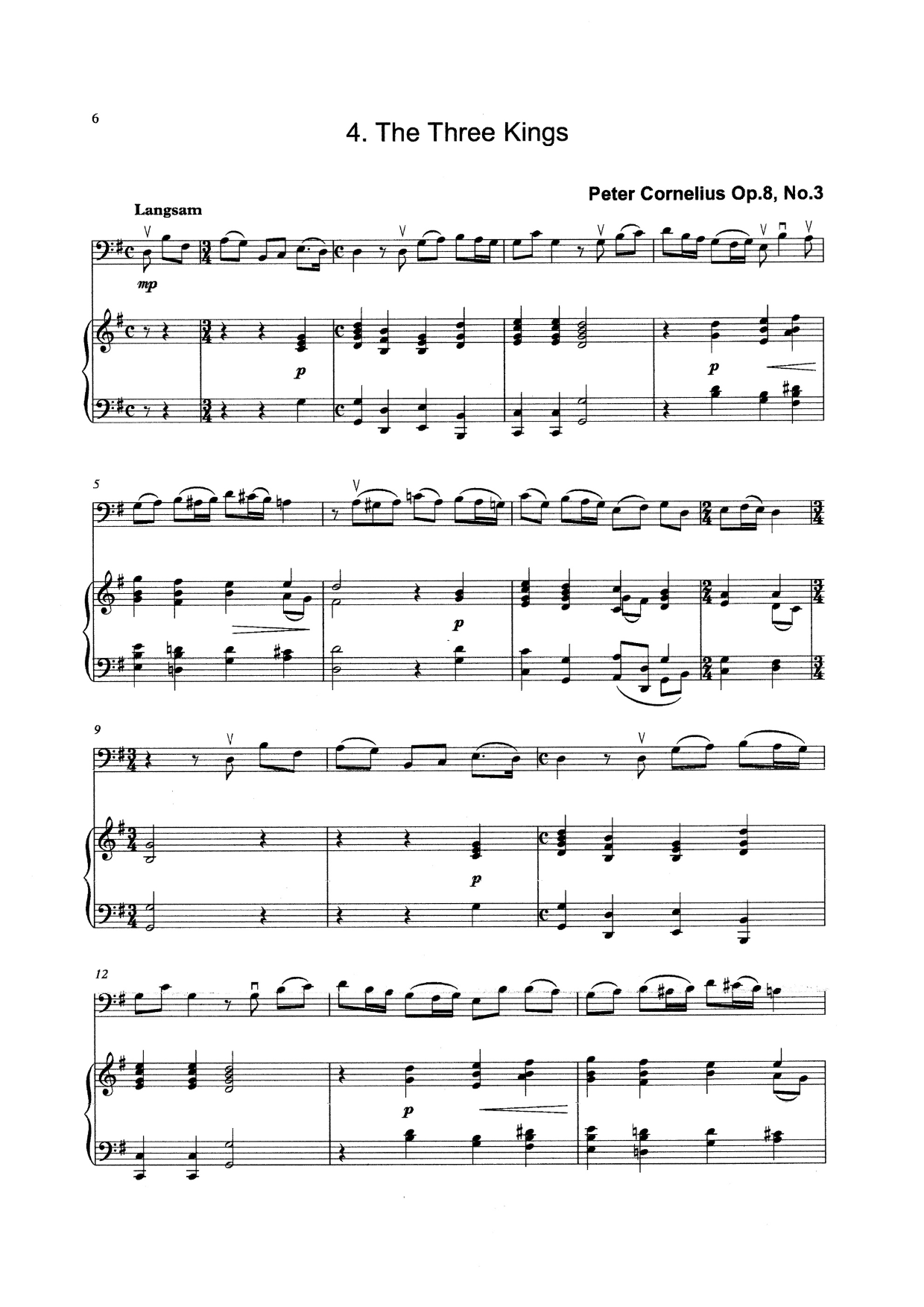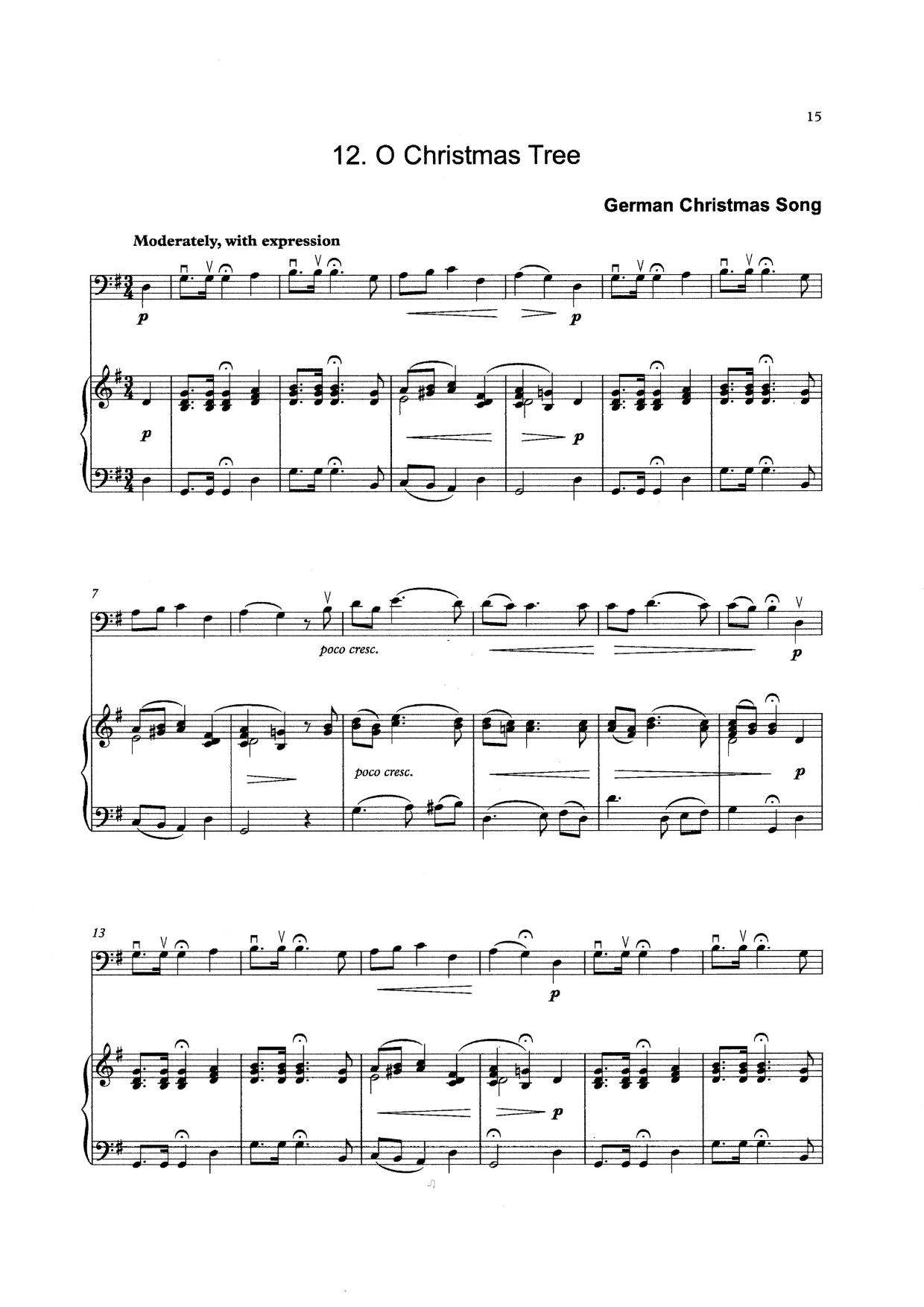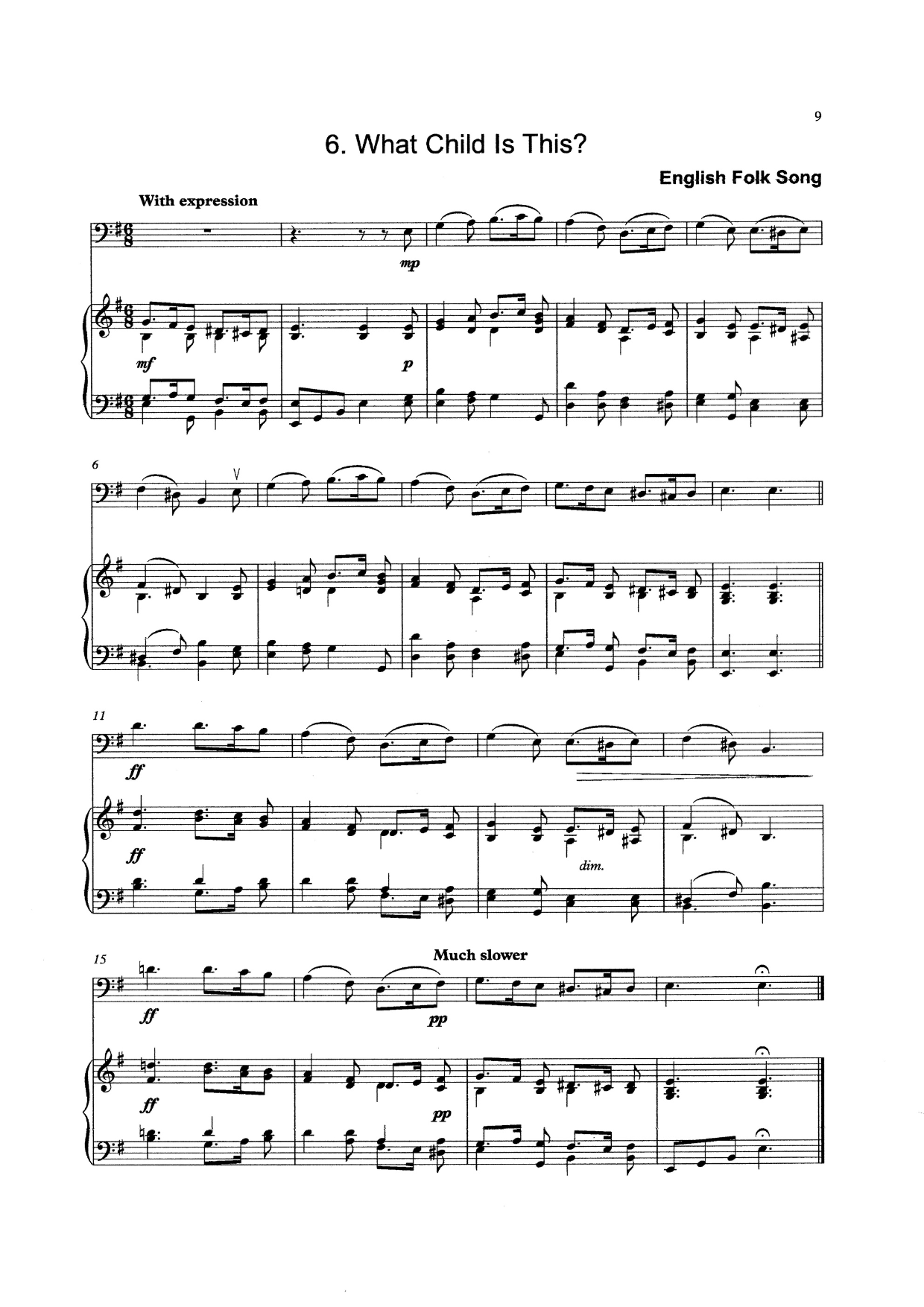David Heyes
Bass Clef Christmas: 16 Christmas Carols & Songs for double bass & piano (ed. Heyes)
Bass Clef Christmas: 16 Christmas Carols & Songs for double bass & piano (ed. Heyes)
Couldn't load pickup availability
About the Collection
Bass Clef Christmas brings together sixteen magical and wondrous Christmas carols and songs from around the world, arranged for the intermediate bassist. The solo part remains in bass clef, with colourful and engaging accompaniments, and these are ideal as concert repertoire or simply to enjoying playing with friends.
Each carol or song is short and concise and the judicious use of repeats, alongside the new dynamics, bowings or articulations, can help to create further variety and contrast. Happy Christmas to Everyone!
Table of Contents
1. The Holly and the Ivy can be traced back to the early 19th-century, but the carol known today was collected in 1909 by Cecil Sharp, an English folk song collector, in Chipping Campden (Gloucestershire, UK), and sung to him by Mary Clayton.
2. Silent Night was composed in 1818 by Franz Gruber (1787-1863), to words by Joseph Mohr (1792-1848), and first performed on Christmas Eve at the Nikolauskirche in Oberndorf (Austria). River flooding had probably damaged the church organ and the premiere was performed by voices with guitar accompaniment.
3. Coventry Carol dates back to the 16th-century and was performed as part of a nativity play, one of the Coventry Mystery Plays originally performed by the city’s guilds. The oldest known text dates from 1534 and the oldest known setting of the melody dates from 1591.
4. The Three Kings (From Persian Lands Afar) began life as a solo song with piano, composed in 1856 by the German composer Peter Cornelius (1824-1874), with the melody accompanied by Philip Nicolai’s hymn Wie schön leuchtet der Morgenstern (How Brightly Shines the Morning Star). Known today in a version for choir, this beautiful and atmospheric Christmas song has entranced audiences for over 150 years.
5. Good King Wenceslas combines the words of English hymn writer John Mason Neale in 1853 with a 13th-century spring carol called Tempus adest floridum (Eastertime is Come). The text tells the story of a Bohemian king who goes on a journey, braving harsh winter weather, to give alms to a poor peasant on the Feast of St. Stephen (26 December),
6. What Child Is This? has words from 1865 by William Chatterton Dix (1837-1898), an English writer of hymns and carols, set to the tune of Greensleeves. It was published in 1871and it is believed that John Stainer (1840-1901) harmonised the melody.
7. As with Gladness Man of Old is set to words by William Chatterton Dix. Known today for publishing several volumes of hymns, Dix was primarily from the business world and was the manager of a marine insurance company in Glasgow for many years. The melody is by German composer Conrad Kocher, who founded the School for Sacred Song in Stuttgart, which popularised four-part singing in the churches of that region.
8. We Three Kings of Orient Are was written by John Henry Hopkins Jr. (1821-1891) in 1857. Hopkins was the rector of Christ Episcopal Church in Williamsport (Pennsylvania) and he wrote the carol for a Christmas Pageant in New York City.
9. The Golden Carol of Melchior, Balthazar and Caspar is an old English carol, probably first published in A Collection of Old Christmas Carols by Edward Francis Rimbault (1816-1876), and subsequently arranged by the Victorian choral composer John Stainer (1840-1901).
10. As I Sat on a Sunny Bank is an English traditional carol, collected by Cecil Sharp in around 1911 from a resident of Wootton-under-Edge in Gloucestershire, which is a variant of the more popular carol I Saw Three Ships Come Sailing In.
11. In Dulci Jubilo is Latin for ‘In Sweet Rejoicing’ and originally dates from the Middle Ages. Buxtehude, J.S. Bach and Liszt, amongst others, used the carol in various compositions and the words have been translated a number of times.
12. O Christmas Tree is a German Christmas song, originally called O Tannenbaum (O Fir Tree), based on a traditional folk song that was unrelated to Christmas and the German lyrics were added to the song in 1824. The traditional tune has been set with new lyrics many times.
13. God Rest You Merry, Gentlemen is an English traditional Christmas carol. It possibly dates back to the 1650s and the first printed edition dates from c.1760. Over the years it has been recorded by many singers including Bing Crosby, Garth Brooks, Annie Lennox and the cast of Glee.
14. Hark! The Herald Angels Sing is an English Christmas carol and the text first appeared in print in 1739. A hundred years later Felix Mendelssohn composed a cantata to commemorate Johannes Gutenberg and the English music William H. Cummings took music from the cantata to fit the lyrics of Hark! The Herald Angel’s Sing, which is still used for the carol today.
15. The First Nowell is a traditional English carol with Cornish origins, dating from the 1820s. There are different lyrics in various editions but this remains one of the most popular Christmas carols to the present day.
16. Joy to the World has words by the English minister and hymnist Isaac Watts, dating from 1819, with music by the American composer Lowell Mason (1792-1872). It is one of the most joyful and jubilant carols in the repertoire today and is loved and performed the world over.
